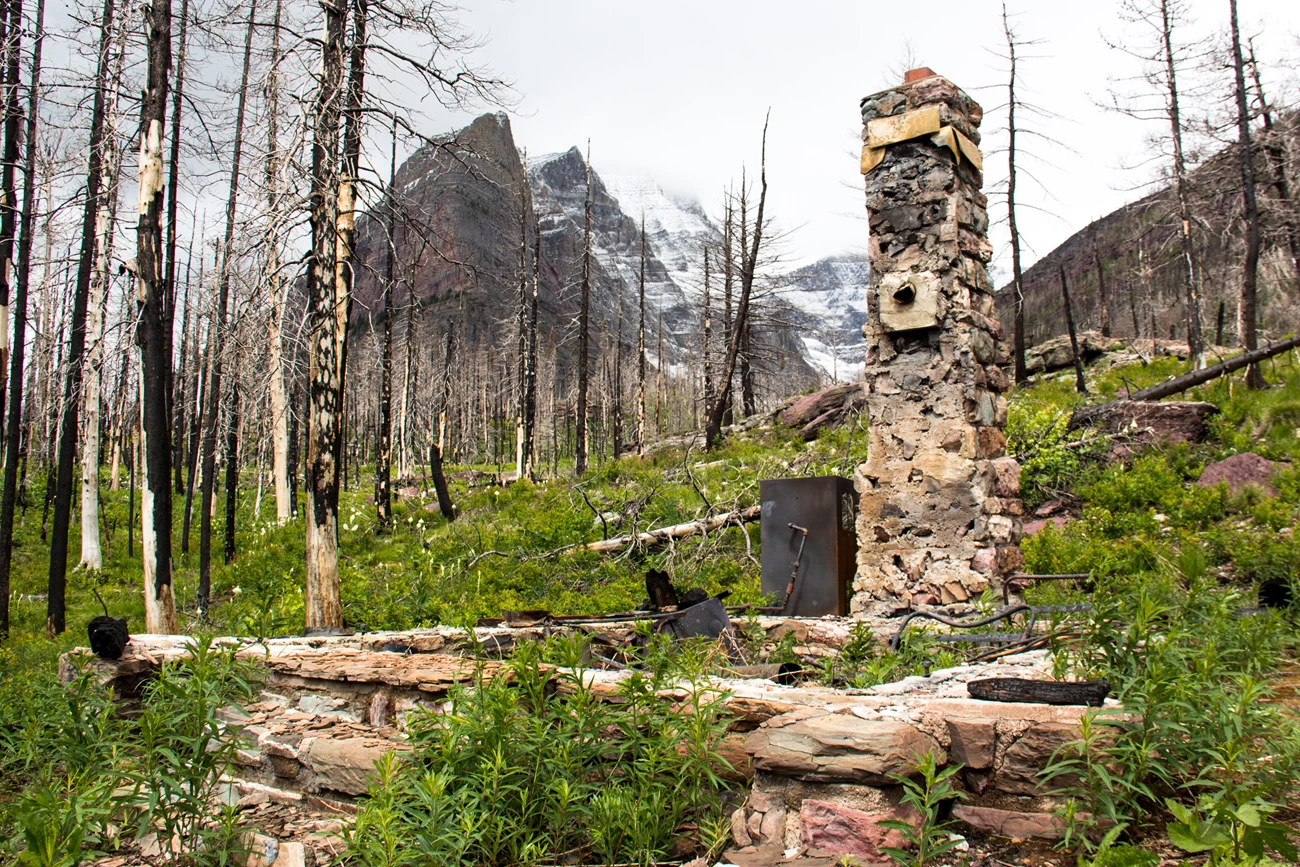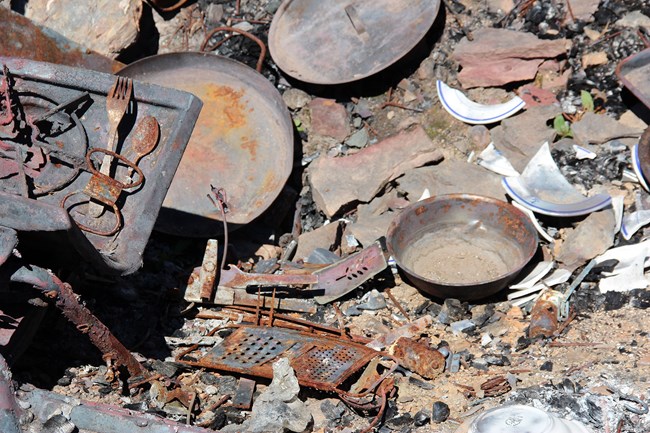Last updated: December 5, 2024
Article
Destruction & Discovery: Exploring fire's impacts on Glacier's historic landscapes
By Peri Sasnett

NPS/Peri Sasnett
2017 was a historic fire year in Montana—1.4 million acres burned in the state, marking a new record. This followed closely on the heels of 2015, when Glacier experienced two major fires during what was otherwise a moderate fire year across the state. The 2018 fire season has now come to a close, but its impacts are still being tallied. With wildfires predicted to increase in intensity and frequency in future years, Glacier will most likely continue to see large, high-intensity fires on the landscape.
These fires affect many park resources, for better or worse. Our forests are prone to, and well-adapted to, large, stand-replacing fires. These dramatic events create a patchwork of different habitats that allow wildlife to thrive as well as encourage the growth of fire-tolerant trees like larch and lodgepole pine. On the other hand, people are not as well-adapted to large wildland fires. Homes and other important structures are vulnerable, smoke is irritating, and it can be hard to accept changes to beloved places.
Given fire’s inevitable presence in our environment, fire behavior and fire ecology are frequent topics of discussion in Glacier and other western parks. However, the story of how fire affects cultural resources is not one often told. In Glacier, the main impact that comes to mind is the destruction of buildings—especially after the loss of Sperry Chalet in 2017. But fire can also result in the loss of prehistoric American Indian sites and the transformation of current cultural landscapes.
These fires affect many park resources, for better or worse. Our forests are prone to, and well-adapted to, large, stand-replacing fires. These dramatic events create a patchwork of different habitats that allow wildlife to thrive as well as encourage the growth of fire-tolerant trees like larch and lodgepole pine. On the other hand, people are not as well-adapted to large wildland fires. Homes and other important structures are vulnerable, smoke is irritating, and it can be hard to accept changes to beloved places.
Given fire’s inevitable presence in our environment, fire behavior and fire ecology are frequent topics of discussion in Glacier and other western parks. However, the story of how fire affects cultural resources is not one often told. In Glacier, the main impact that comes to mind is the destruction of buildings—especially after the loss of Sperry Chalet in 2017. But fire can also result in the loss of prehistoric American Indian sites and the transformation of current cultural landscapes.

NPS/Melissa Sladek
By looking at a single incident, the 2015 Reynolds Creek Fire, we learn how loss can coexist with discovery. The historic Baring Creek Cabin burned, but many new archeological sites were found in post-burn surveys. As with a recent project on avalanches and the Going-to-the-Sun Road, it seemed that a story map would provide the right medium to dive into the many ways that fire impacts cultural resources. Story maps give us the opportunity to combine a wide variety of media with maps and narrative sections, which suits a complex project like this. Not only were we able to tell this story with words, but we could include maps showing the fire’s rapid spread and photographs of the burned landscape and eventual regrowth.
Park cultural resource specialists gave incredible amounts of time and knowledge to help make this project successful. From taking Crown of the Continent Research Learning Center staff to visit sites with them, to sharing their thoughts on what we gain and lose from living with fire, their efforts helped shape the story map.
Looking back to 2015, it’s easier to view the Reynolds Creek Fire in a greater context, and with some clearer perspective. The Destruction and Discovery Story Map examines the losses as well as the new discoveries following the fire, and hopefully provides insight into how cultural resources are managed within fire-prone ecosystems. Visit our media & publications page to find this and other story maps and products that highlight research and science within Glacier National Park.
